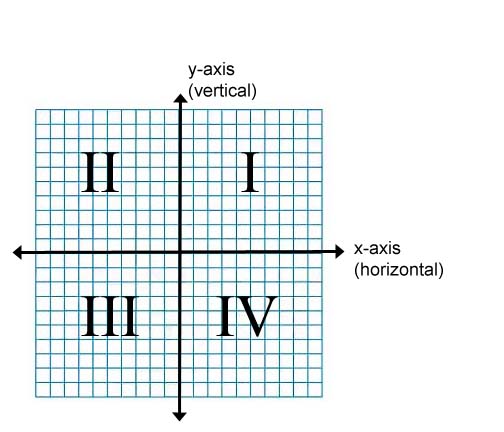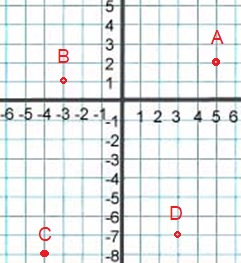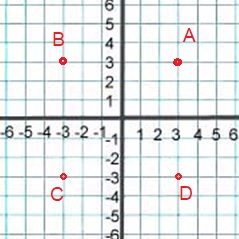 Learning Target: I can locate ordered pairs of integers on the coordinate plane and describe the location of points in all four quadrants.
Learning Target: I can locate ordered pairs of integers on the coordinate plane and describe the location of points in all four quadrants. Learning Target: I can locate ordered pairs of integers on the coordinate plane and describe the location of points in all four quadrants.
Learning Target: I can locate ordered pairs of integers on the coordinate plane and describe the location of points in all four quadrants.
The Coordinate Plane
A coordinate plane is formed by two perpendicular lines that intersect, or cross. One line is vertical and the other is horizontal.
Axes
The perpendicular lines that cross are called axes (plural). Each line is called an axis (singular).
Origin (0, 0)
The point where the two axes intersect is called the origin. At this point both the x-coordinate and the y-coordinate are zero. It is named by the ordered pair (0, 0).
Positive and Negative Values

Ordered Pairs
Every point on a coordinate plane is named by an ordered pair, (x, y). It is called an "ordered" pair because the order matters.
The first number in the pair tells the x-coordinate, or the number of units to move along the horizontal axis.
The second number in the ordered pair tells the y-coordinate, or the number of units to move along the vertical axis.
Quadrants
Quadrants are sections of the coordinate plane. There are four quadrants, or sections.
These are numbered with Roman Numerals I, II, III, and IV. The numbering starts in the upper right corner and moves in a counter-clockwise direction.

Coordinate Values
Note how the x-coordinate and y-coordinate values change between positive and negative values in each quadrant.

Plot the points given on the coordinate plane below.
Discuss their relationship to the y-axis.

Let's Practice Together
1. Plot and label the following points:
 Point A: (5, 2)
Point A: (5, 2)
Point B: (−3, 1)
Point C: (−4, −8)
Point D: (3, −7)
Your Turn
2. Plot and label the following points.
 Point A: (3, 3)
Point A: (3, 3)
Point B: (−3, 3)
Point C: (−3, −3)
Point D: (3, −3)
What shape will be formed if you connect the dots in the order A, B, C, and D?
3. Which quadrant of the coordinate plane contains negative values for both x and y?
4. The point (−2, −3) is graphed on the coordinate plane below.
What will the new coordinates be if this point is reflected across the y-axis?
5. The point (−2, −3) is graphed on the coordinate plane below.
What will the new coordinates be if this point is reflected across the x-axis?
Check for Understanding
1. Maya and Lucas are exploring a new park. They decide to map out some interesting locations in the park using a coordinate plane. Here are the coordinates for some key locations in the park:
In which quadrant is each of these places located?
Answers
1.
2. square
square
3. Quadrant III
4. (2, -3)
5. (-2, 3)
Check for Understanding
1. Entrance: Quadrant I; Picnic area: Quadrant III; Playground: Quadrant IV; Fountain: Quadrant II